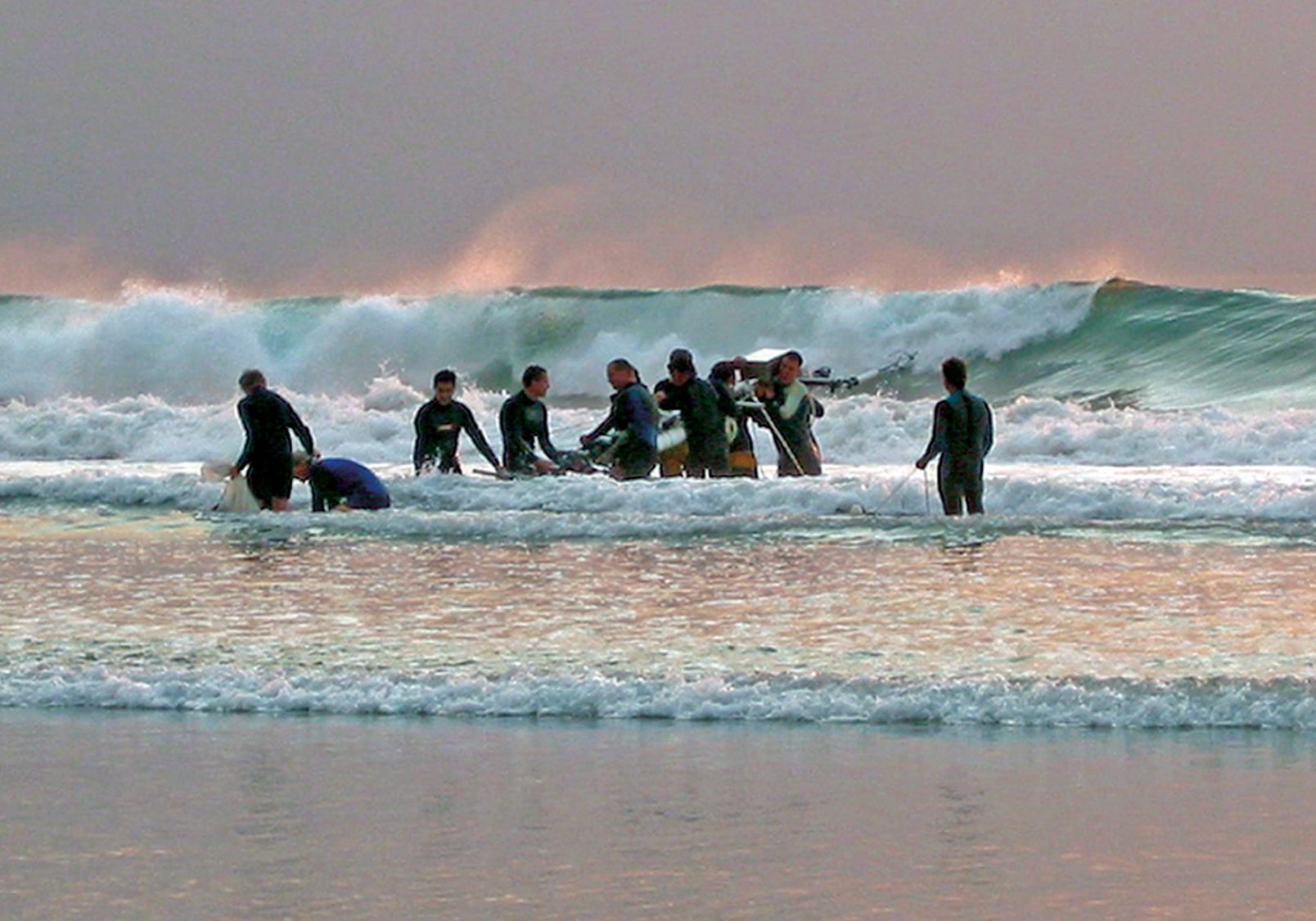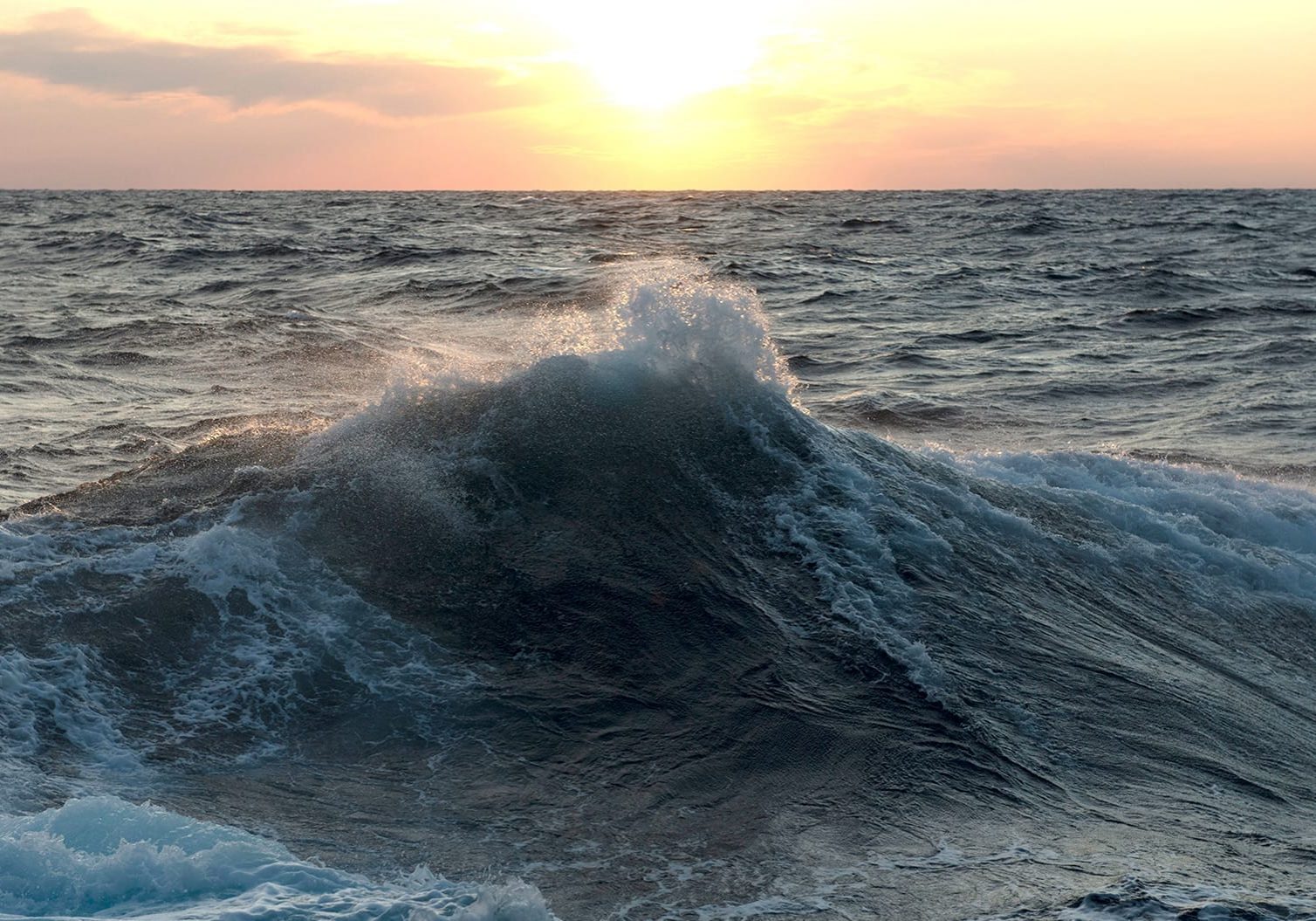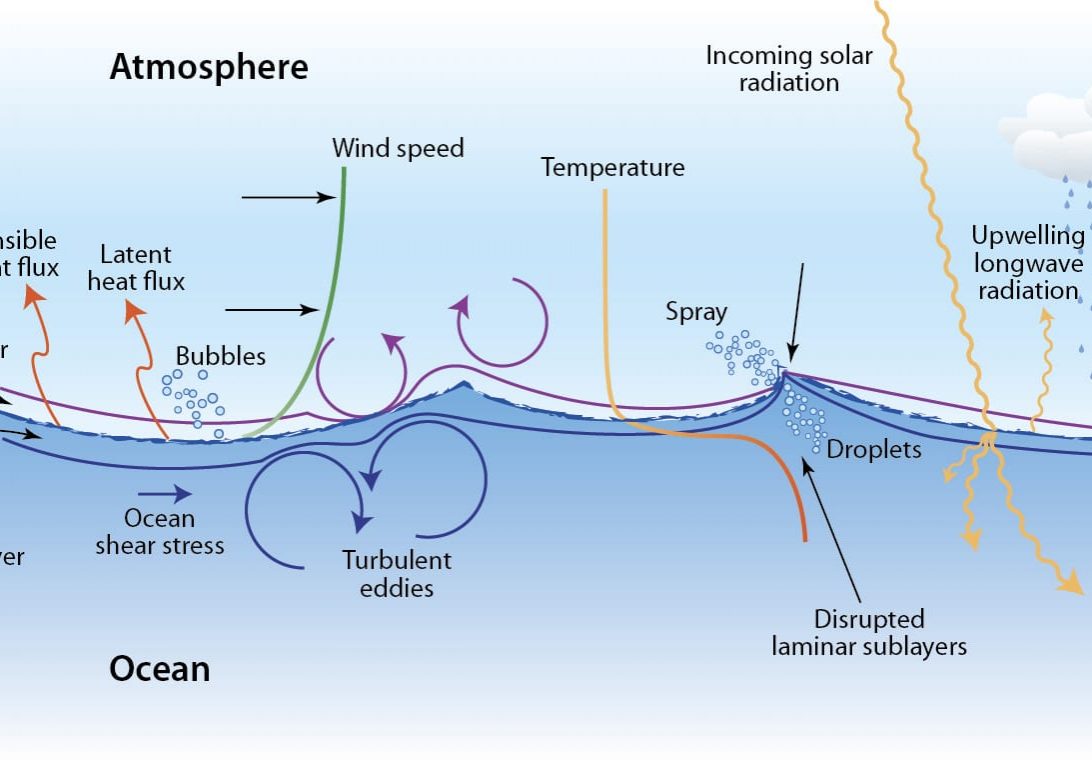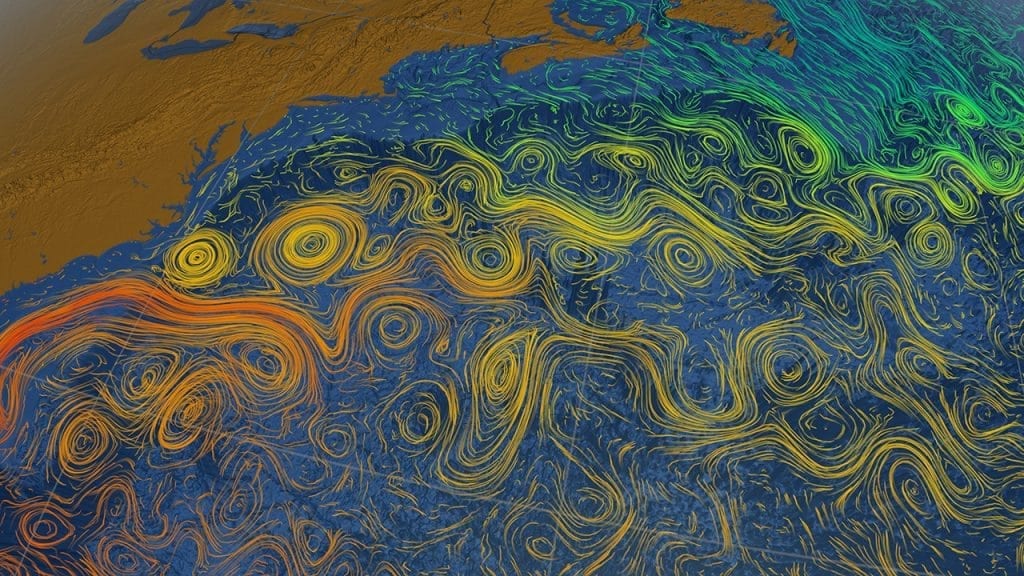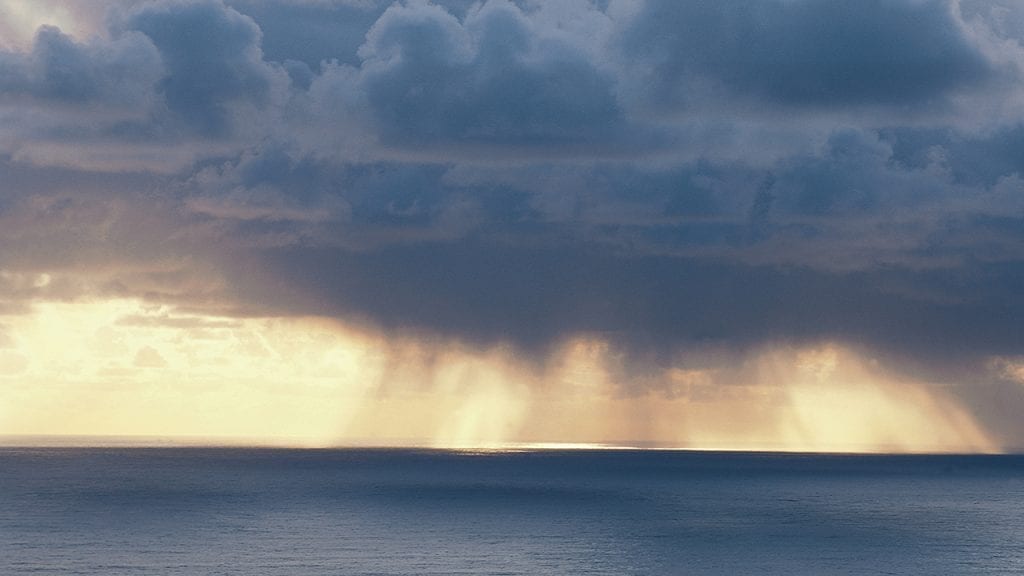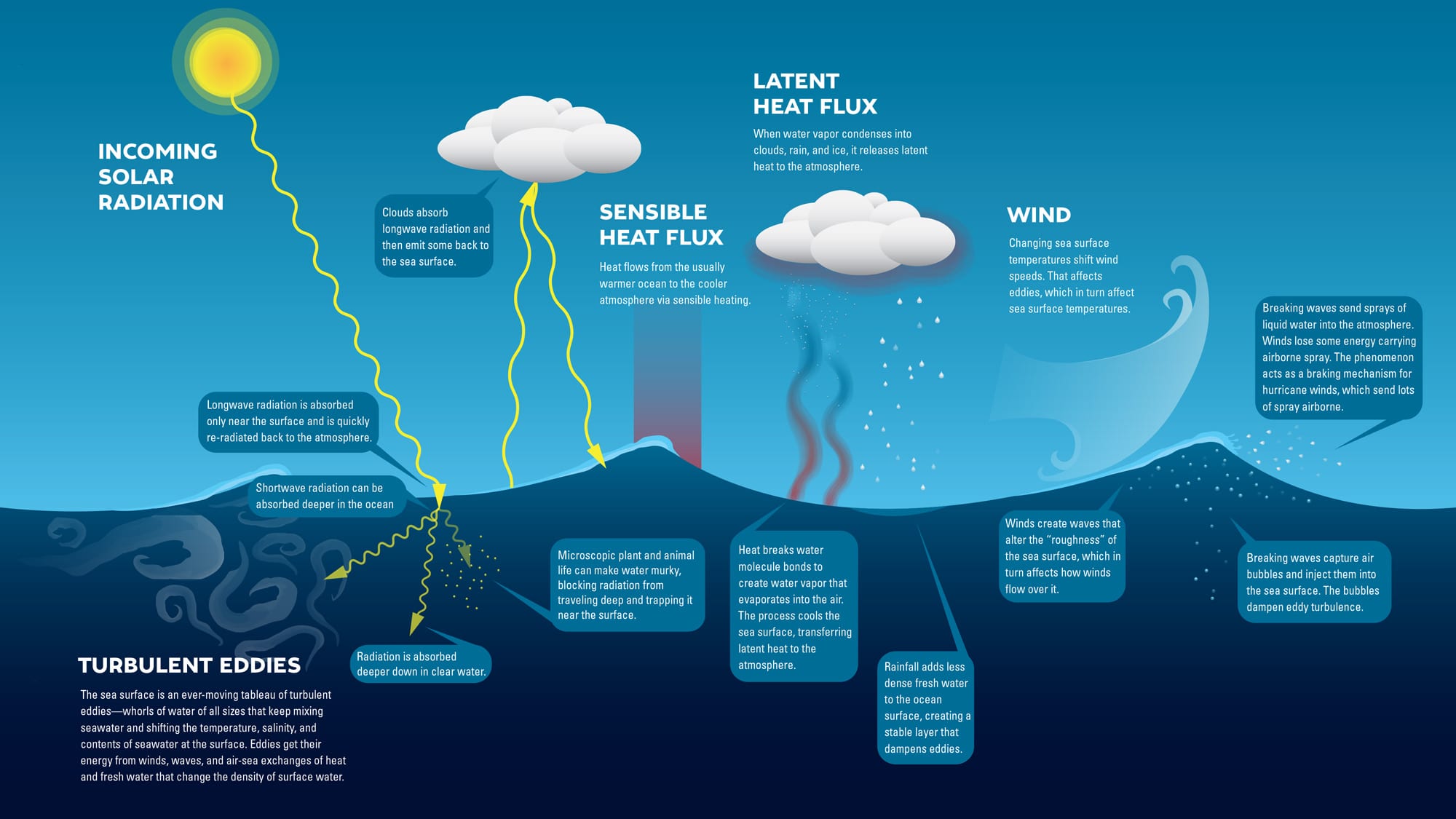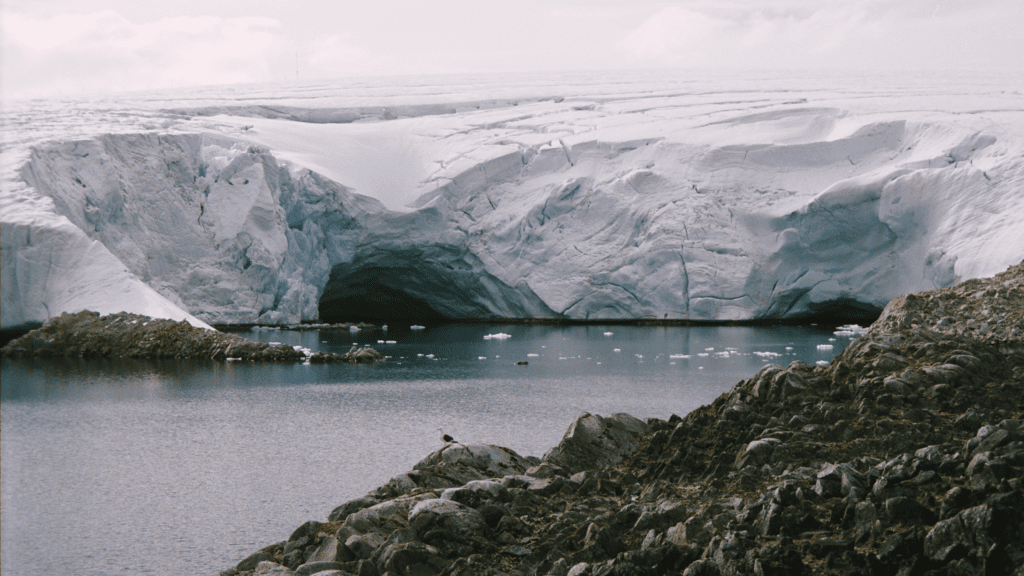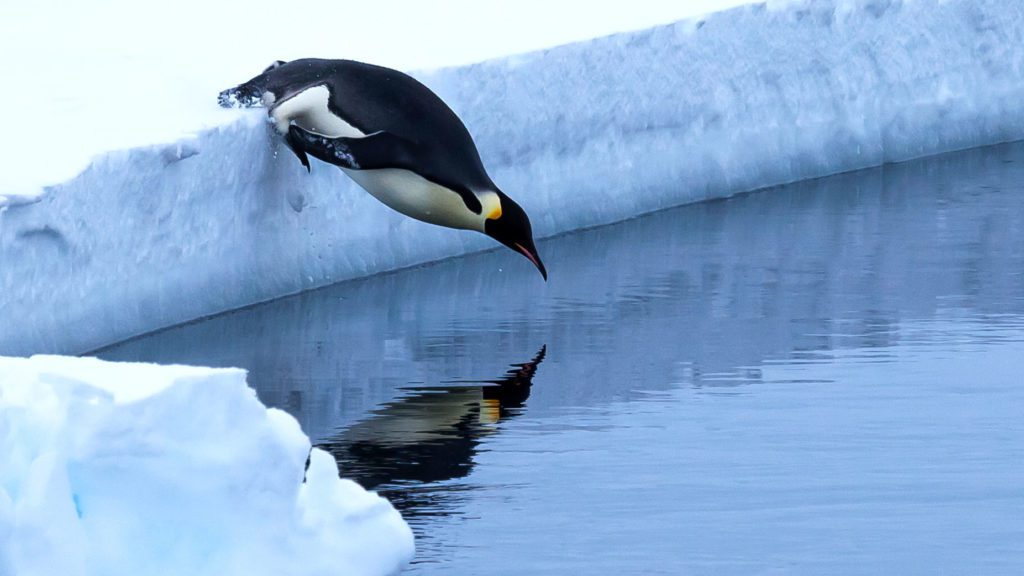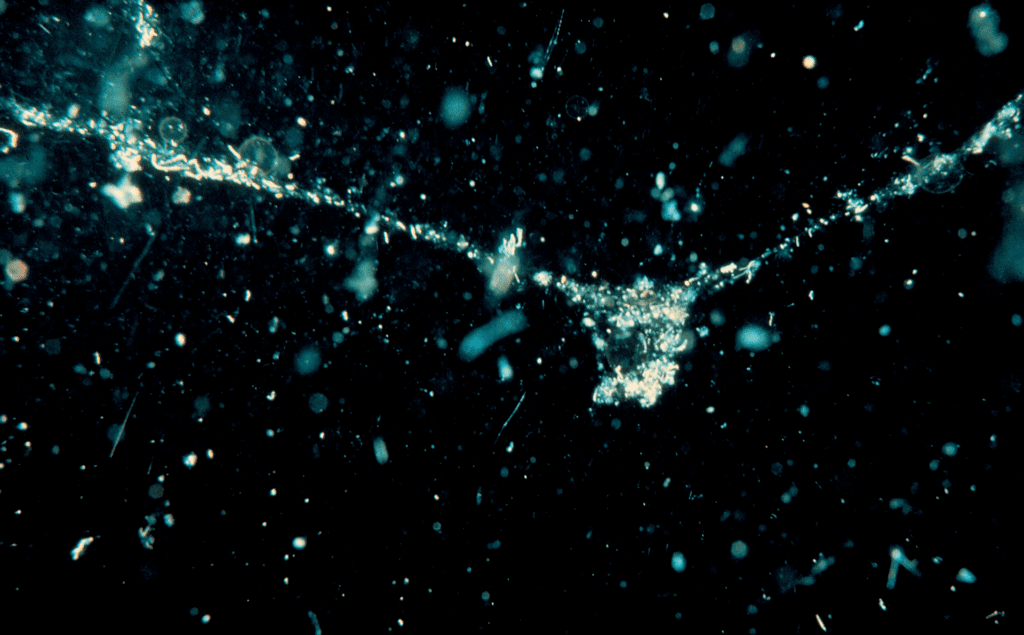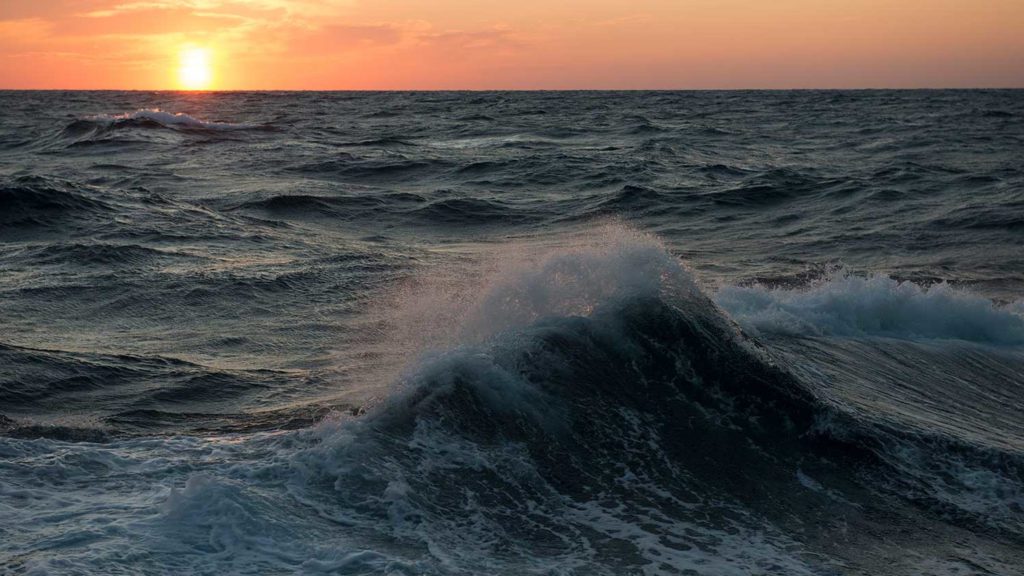A trip to the ocean means sun, wind, and waves. These waves crash on the beach, waking you in the morning and lulling you to sleep at night. Surfers ride them. Children play in them. Swimmers dive beneath them. What causes waves? Wind and, ultimately, the sun.
Sunlight heats our planet unevenly. It’s most intense near the equator and decreases as we get closer to the poles. That uneven heat causes wind. Hot air rises, drawing in air from cooler areas to fill the space. It’s this difference in temperature that causes wind.
Wind is a form of energy. When it blows across water, it transfers some of that energy to the water. This energy causes particles of surface water to move. But they don’t simply travel in the direction the wind is blowing. Instead, they move in circles. A particle of water on the surface moves up. As it reaches the highest point (the crest), it slows. Then gravity takes over, pulling it back down again. As it goes it circles back to its starting position or a spot very close to it.
If you have ever stood in a wave, you know this feeling. Water pushes you up as the wave crests. You then drop into the trough (low point between waves). You are also pushed forward and back. If you were small enough to drift in the water, your body would complete a circle. Next time you see a buoy out on the water, watch it bob up and down. You can follow its circular path.
When wind creates waves in deep water, we get large swells. Swells don’t look like the waves we see on the beach. Instead, they look like rolling hills. It’s only when those swells reach shallow areas that we see the distinctive form of a wave.
As the circular flow of water runs into the seafloor, it catches on the bottom and slows down. This causes the water behind it to pile up. Eventually it gets too tall. The wave crests, curling over the top and tumbling over itself. It crashes onto shore and slides up the beach before retreating.
Not all waves crest on shore the way wind-caused waves do. Big storms can cause storm surges. Underwater earthquakes or mudslides can cause long waves called tsunamis. Storm surges and tsunamis power onto land like a wall of water, wiping out anything in their way.
LEARN MORE ABOUT PHYSICAL PROPERTIES OF THE OCEAN
Currents, Gyres, & Eddies
At the surface and beneath, currents, gyres and eddies physically shape the coasts and ocean bottom.
Water Cycle
The water cycle describes the continuous movement of water on, above and below the surface of the Earth.
NOAA. What causes ocean waves? https://oceanexplorer.noaa.gov/facts/waves.html Accessed on December 4, 2020.
NOAA. Why does the ocean have waves? https://oceanservice.noaa.gov/facts/wavesinocean.html. Accessed on December 4, 2020.
Smithsonian. Currents, Waves, and Tides. https://ocean.si.edu/planet-ocean/tides-currents/currents-waves-and-tides. Accessed on December 4, 2020.
The Weather Guys. How does the wind make waves on water? http://wxguys.ssec.wisc.edu/2014/09/02/how-does-the-wind-make-waves-on-water/ September 2, 2014.
DIVE INTO MORE OCEAN FACTS
How do glaciers affect sea level rise?
Sea levels have risen and fallen throughout geologic history due to a myriad of natural processes, most notably the forming and melting of glaciers.
How do polynyas help feed emperor penguins?
When female emperor penguins—and later, males—return to the ocean to feed, they need a spot that gives them easy access to both the water and the ice. And, they also need places that are teeming with fish and other types of prey. Learn how polynyas provide a place where penguins can feast and build their energy reserves after breeding.
Where does all the carbon go?
Explore the ocean’s critical role in carbon sequestration and how it could be a pathway to mitigate climate change.
What is a marine heatwave?
From waning winds to warmer atmospheres, here is the recipe for sudden temperature spikes in our ocean

